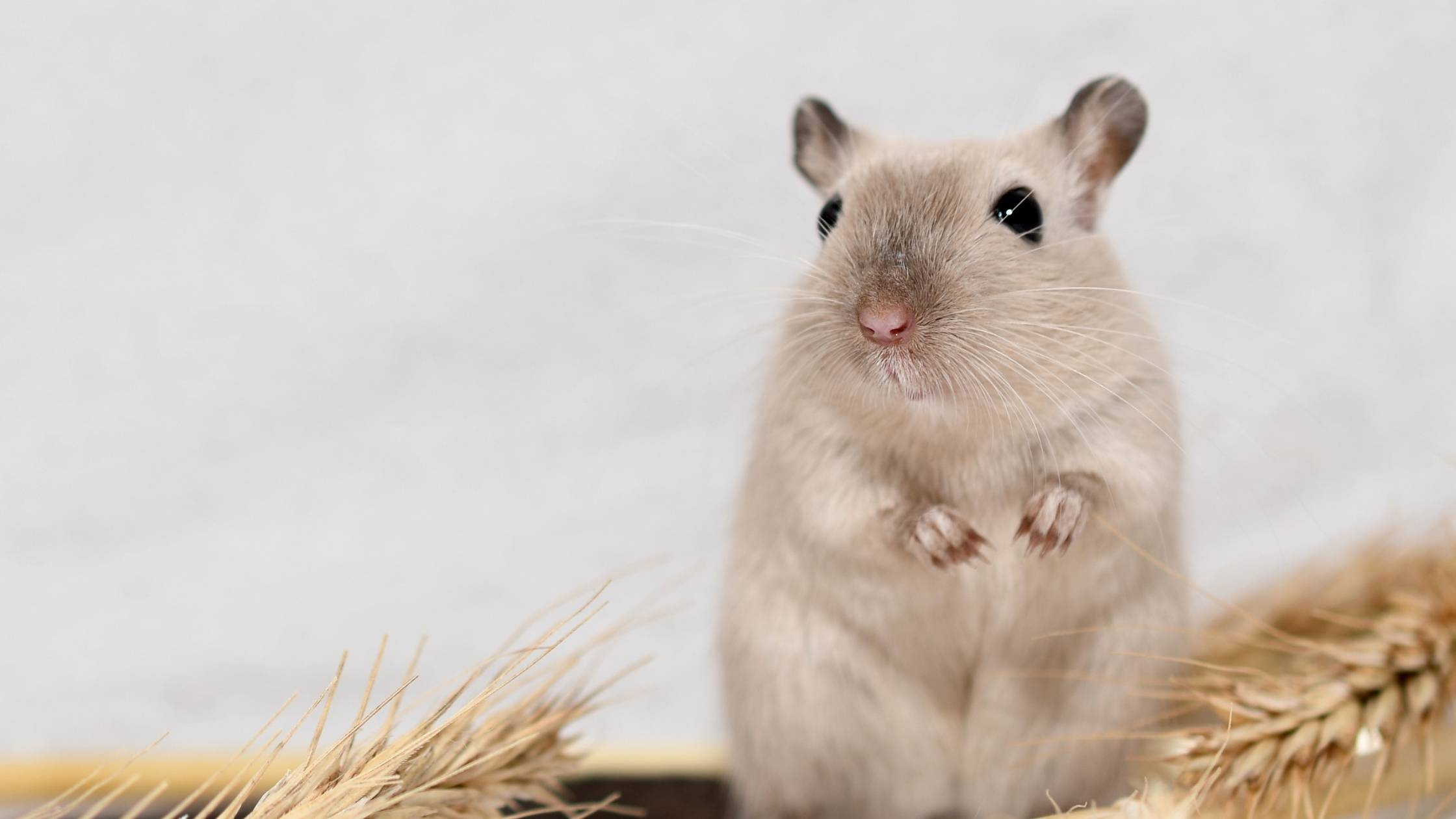Last Updated on 07/05/2021 by Veronica Jones
The Fat-Tailed Gerbil (Pachyuromys duprasi) is also known as a duprasi gerbil or “doop” and they belong to the subfamily Gerbillinae and the only member of the genus Pachyuromys.
How do I know if the gerbil that I bought is a Duprasi?
Fat-tailed gerbils have long and fluffy fur, they are often described as having a large round body with oval-shaped eyes and pink ears that are positioned low on the head. The color of their fur varies between gray and tan that is sometimes tipped with black. The hair on the underside and feet are white. And of course, they have a thick and club-shaped tail which is shorter than their head and body.
Why are their tails fat?
The reason why duprasi have fat tails is for them to survive the harsh environment of the desert in the wild. Their tail is used to store water and fat. If the tail of your newly bought duprasi is too skinny, that would be an indication that your pet isn’t getting enough nutrients or food.
A healthy Fat-Tailed Gerbil would have thick, soft, fluffy coat
Are Fat-Tailed Gerbils good pets?
Fat-Tailed Gerbils are great starter pets for all ages but are very much popular among kids, they are very affectionate. It’s like having your very own Pokemon but without the battling part. The more time you spend with your gerbils the more they are grown attached to you.
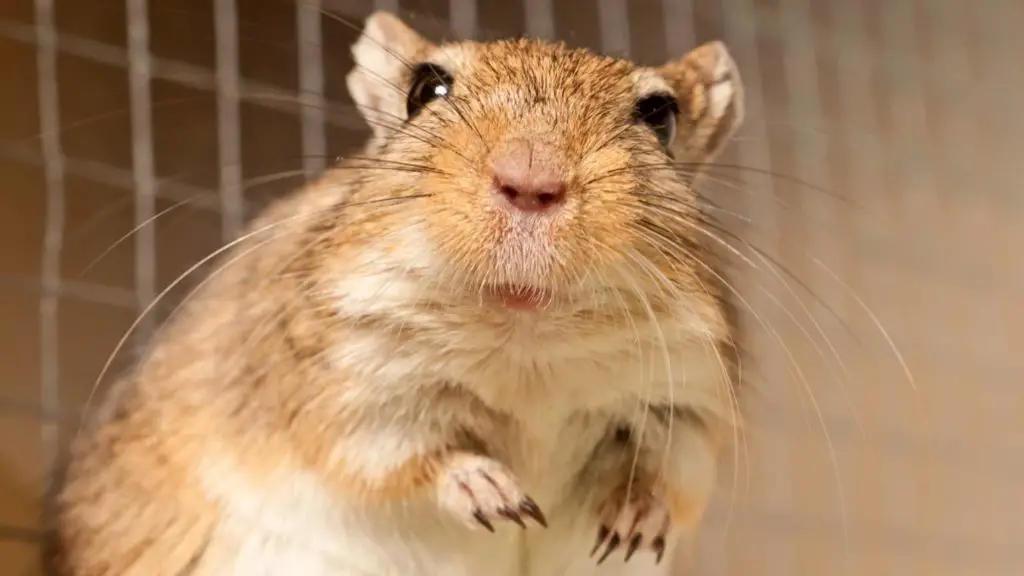
These little furballs are docile, so it’s easy to say that you can handle them without worrying too much about getting bitten.
They are one of the best pets to keep if you’re a busybody because in the wild they are nocturnal animals and would likely be less active during the day. They might be active for a little bit, then sleep, and then become active again.
How much do Fat-Tailed Gerbils cost?
Duprasi gerbils are new to the pet trade and have not long been introduced in the market compared to its cousins; the Mongolian Gerbils, Unlike the Mongolian gerbils, there are fewer breeders and it’s illegal to import them in the US. That is why they are still a bit rare to find in the market, even in exotic pet stores. The average costs for Fat-Tailed Gerbils range from 30 dollars to 100 dollars each. Since Fat-Tailed Gerbils don’t prefer to live with other gerbils, it’s safe to say you don’t need to spend extra cash for a partner, unlike the Mongolian Gerbils that tend to feel lonely and need a pair.
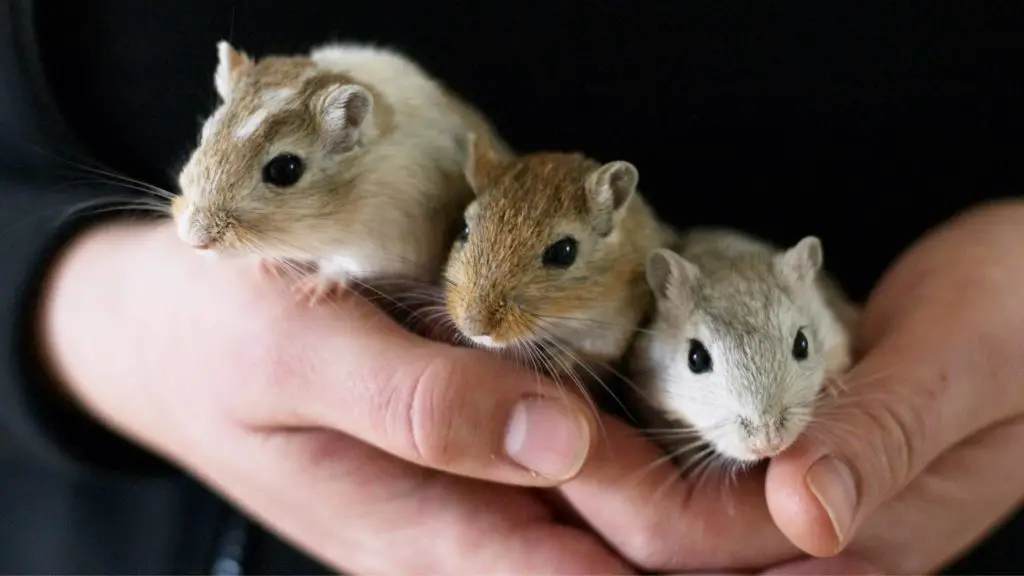
Where is a Fat-Tailed Gerbil from?
These creatures live in the desert and would make burrows but not as deep as the Mongolian Gerbils. They originated from the northern Sahara desert, living in groups of 17 but they don’t mind living alone. They were discovered first in Algeria, their species extends to Tunisia and Libya as well.
Recommended Article: Hamster vs Gerbil as Pets
Since the Fat-Tailed Gerbils are desert animals, they have a very low water requirement and because of this, they don’t feel the need to pee that much and would produce a small amount of urine and therefore do not smell that much. They have a favored appetite for insects and some plants in the wild, but as pets, they are fed with crickets, mealworms, beetles, vegetables, grains, and gerbil mix.
Is there a Fat-Tailed Gerbil?
A lot of people are unaware that these cute little balls of fur exist. They started to be introduced into the market in the early 2000s but up until now there hasn’t been a lot of breeders for this species, talk about rare!
What is the Fat-Tailed Gerbil’s lifespan?
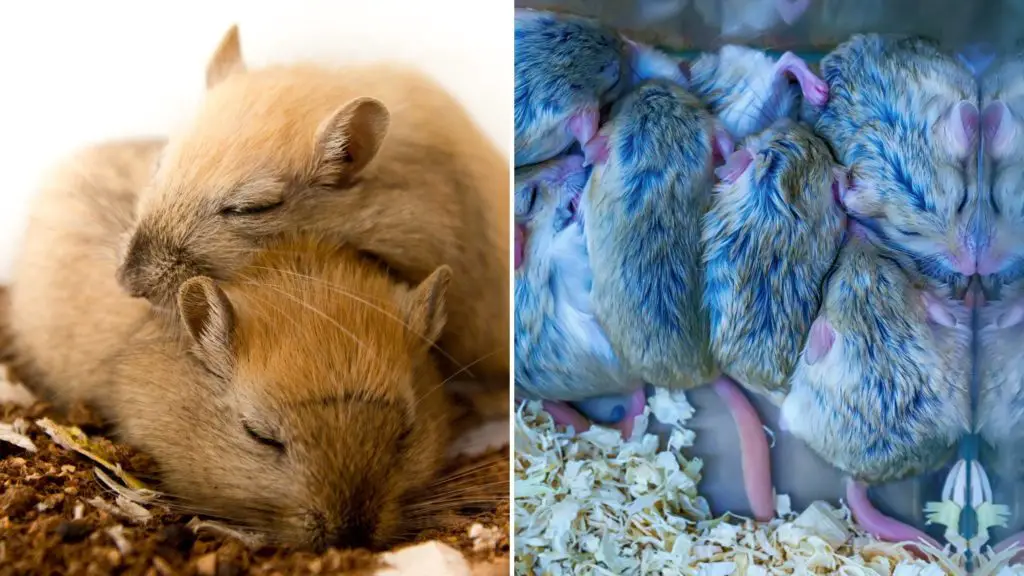
The average lifespan of a duprasi is about five to seven years, it’s not that long but it’s actually better than most small animals. But of course, it will also still depend on how you take care of your pets.
Even though they live in a challenging environment The Fat-Tailed Gerbil is still susceptible to certain types of health problems, and as a keeper yourself you should be aware of these problems to make sure your pet would be in great shape.
Here are the most common health issues associated with the duprasi:
- Dental issues – to keep your pets from having overgrown teeth, they must chew or gnaw every day.
- Ear problems – often caused by mites, it can be treated with sprays or Ivermectin.
- Pneumonia – they are usually caused by high humidity, or wrong bedding in their tanks or cage and never use cedar and pine.
- Seizures – if put in an environment that’s stressful, your pet can get seizures.
- Strokes – usually occur in old gerbils and are fatal.
- Tumors – gerbils can develop tumors, it’s better to keep them checked for unusual growths.
- Tyzzer’s disease – it is a bacterial infection of the digestive system, they will need veterinary attention for them to survive.
To avoid these health issues, always clean their enclosures and give them proper food and attention.
How to take good care of your Fat-Tailed Gerbil?
Provide a proper home environment
The first step in pet keeping is to always provide shelter or space for your pet imitating the kind of environment they live in, in the wild. The best way to keep your duprasi is, by getting a tank that has a safety lid on top so that they won’t be able to escape from its enclosure and to keep outside threats away from them.
Your fat-tailed gerbil will usually spend its day digging, so it is important to provide a thick layer of bedding, you’ll need to put at least two to four inches deep of bedding across the entire floor of the tank, this will also act as an absorbent for their urine. The best bedding you can provide is either Aspen, Corncob bedding, or even wood shavings but never pine or cedar since many rodents get allergic reactions from them and can develop respiratory problems. To prevent their fur from becoming greasy, they will need to take a sand bath regularly.
Toys
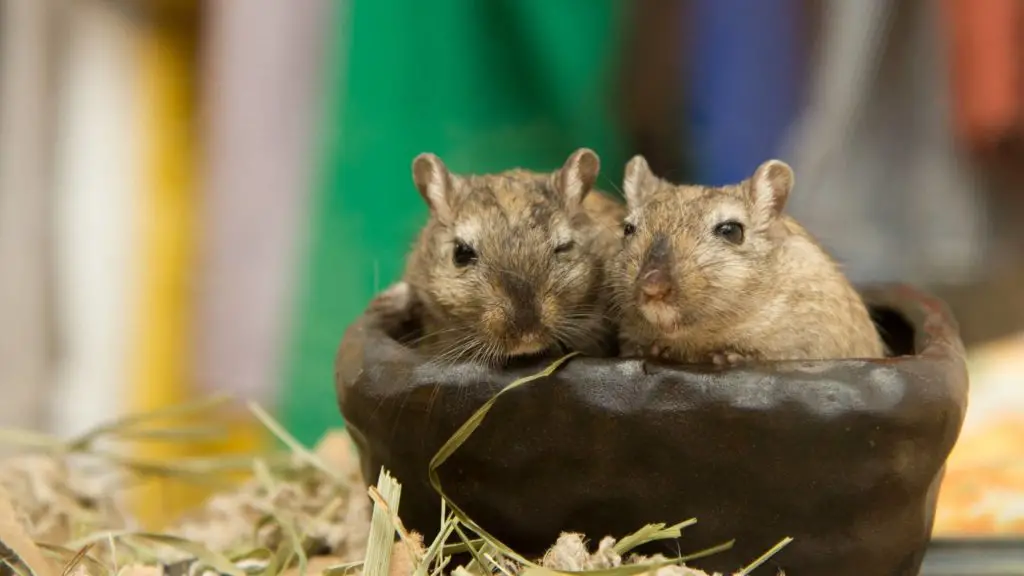
For your pet to have ample amounts of exercise and expend their energy while stimulating their creativity, give your gerbil an exercise wheel and some tunnels for them to run in. never give them toys that are made out of plastic because they would chew them and might swallow bits and pieces that could clog their intestinal tract. Provide small pieces of untreated wood or cardboard for them to chew instead.
Attention
In the first few days of having your Fat-tailed gerbil, you need to allow them some time to adjust to their new environment and to warm up to you. Bonds never happen overnight, they will gradually familiarise themself with your scent and build up trust. You may have to try and talk to them in a whispery voice since they might get frightened and could cause them stress. Try slowly going near the tank or cage in the first few days for them to recognize you but don’t pick them up yet. After a few days, if your pet doesn’t hide from you when you go near them, then you can consider picking them up and pet them.
Once you feel like you have established a relationship with your pet gerbil, engage with them more by holding them daily. Hold them gently in the palm of your hand and pet them softly with the other hand. It’s best to be seated down if you’re handling them so, that if ever they accidentally fall from your hand, your lap could cushion them preventing an injury. Make this a daily routine for them to be happy and active.
Food and Water
Fat-tailed gerbils are mostly insectivorous in the wild, but they also include a variety of plants in their diet. But as pets, breeders would recommend feeding them rodent mix that can be bought at your local pet shop. They typically eat one to two tablespoons of food every day. To provide a well-rounded diet for your pet, add in some fresh fruits and vegetables.
As desert dwellers, they normally wouldn’t come across fruits and vegetables that are rich in water. This would mean that their digestive tracts are well adapted to food that contains a lot of moisture, and so only small portions of these foods should be fed to them. Too much fruit and vegetables could upset their stomach.
A balanced diet for your Fat-tail gerbil would include formulated mixes and pellets, fruits, vegetables and would associate Nuts, Seeds, and insects as treats.
Here are lists of food that you can feed your gerbil:
Nuts: Peanuts, Almonds, Pistachios, Pecans, Macadamia Nuts, Brazil Nuts. But make sure they are unsalted, fresh, and not cooked.
Seeds: Pumpkin, Sesame, Sunflower, Seeds of bulbs, herbs, and grasses. Sunflower seeds are very fatty, so, feed them in moderation.
Fruits: Apple, Banana, Blueberry, Cherry, Kiwi, Plum, Pear, Melon, Orange, Strawberry
Vegetables: Bell pepper, Cabbage, Carrot, Corn, Cucumber, Green beans, Lettuce, Pea, Pumpkin, Fennel, and Zucchini. Cabbage and Lettuce have high water content, also feed this in moderation.
Don’t ever feed your Fat-tail gerbils Avocados, Grapes, Apple seeds, other fruit seeds, Rhubarb, Garlic and Onion, some citrus fruits, meat, biscuits, cakes, chocolates, and Raw potato.
Food preparation
You will need to wash the fresh fruits and vegetables to remove any harmful or pesticides found on the surface. It is always best to grow your own but if you don’t have the luxury of time and space just buy it from your local grocery. Wash them in clean and warm water, then remove any dirt.
Gerbil mixes, Nuts, and Seeds should be put in the freezer for at least quite some time- ideally overnight before you feed them to your pets. This will kill any bugs or eggs that may be present in them, if your pets accidentally come in contact with certain bugs, they may get an infection, disease, and even death. Always be cautious and freeze them before feeding them to your gerbils.
Never forget to provide fresh drinking water, just like any other pet. They would need constant access to clean water. You can buy a water bottle or water dish at your local pet store. But a water dish can become contaminated pretty easily with bedding or food. A water bottle is more suitable and sanitary.
Clean the food bowl and water bottle or dish daily to keep it sanitary and clean. Throw away uneaten food before putting in new food.
How often should I clean their tank/cage?
Clean your gerbil enclosure once every two weeks, put your gerbil in a safe place while cleaning its tank, a small temporary cage or gerbil ball would do the trick. Empty the tank from all of the beddings, rinse out everything with warm water and mild soap. Dry it completely before setting up the new bedding. If there is water or food spillage inside the tank, you may have to clean it sooner, don’t leave it for a long time, or else it will start to smell and mold might form, and this is not good for your pet.
Hygiene
Do Fat-tailed gerbils need to take a bath?
If you have tried keeping hamsters before, you would occasionally see them cleaning themselves, it’s the same with Fat-tailed gerbils, they will spend a lot of their day washing themselves and making their fur clean. Gerbils are extremely clean creatures.
In some cases, they may need a bit of your help especially if they are ill or getting old.
As I mentioned above, they will need an occasional sand bath to clean their fur. In the wild, they will use sand in cleaning their fur and since there is little water in this arid climate that they naturally inhabit, they have developed this behavior instead of taking a water bath.
Do I need to brush their coat?
If there is dried food or droppings stuck in their coat, you can use a small, wide-tooth brush to get it out.
If there’s only a little dirt on them, just try wiping it off with a little bit of water on a cloth instead of a whole-body bath.
Should I trim their nails when it gets long?
Eventually, your gerbil’s nails will grow too long, they don’t have the opportunity to wear down their nails naturally unlike in the wild so that means you’ll have to step in and give them a helping hand.
Make sure that your gerbil is calm to avoid clipping injuries, examine the nails carefully. It’s best to get another person to help you hold your pet on their lap while doing so. Shine a flashlight underneath the foot to illuminate the nails, you will see that there are blood vessels in their nails and it’s very important to avoid cutting this or the surrounding nail. To avoid this, only take a tiny portion of the nail at a time, trim the very end until the nail is no longer curving towards the foot just enough for them to put their whole foot down without the nail touching the ground. If you’re not confident in doing so, seek professional help.
Monitoring their health
One of the main important aspects of pet keeping is to know how they should look normally as they go about their day-to-day routine. When you’ve become used to your pet, you’ll understand what they would look like in their top shape, if they’re happy and healthy. It’s best to always monitor their health for underlying issues.
Check their breathing, hair, eyes, ears, skin, and bodies.
They usually show changes in behavior when they are not feeling well. Your Fat-tailed gerbil may start eating more or less if they are sick. If they are hunching unusually, coughing, or have a hint of a bloody nose, it could be a sign of respiratory infection.
For intestinal problems, if there are noticeable changes in their dropping’s consistency and there are feces sticking out in their behind, you may have to visit the vet immediately.
Oftentimes the indication for a sick gerbil would have sores, lumps, and scabs around the nose and mouth. Their coat may begin to change in texture and thickness if their health is compromised and/or not getting enough nutrients.
If you have urgent concerns about your fat-tailed gerbil, make an appointment with your local veterinarian and bring them in for a checkup. It’s also ideal to schedule an annual checkup to prevent future problems.

